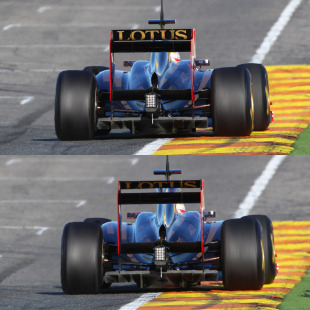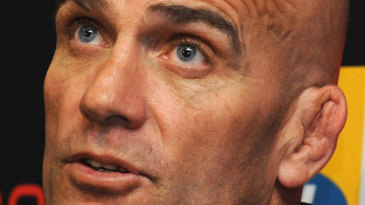It wouldn't be a new season without the powers that be tinkering with the rulebook.
The cars

- In Focus:
- DRS
- |
- Rule changes
Adjustable rear wings
New moveable bodywork regulations have allowed adjustment of the rear wing from the cockpit at any time in practice and qualifying, but only when a driver is less than one second behind another car at a pre-determined point on the track. Braking deactivates the device. The intention is to decrease drag for the chasing car and improve the chances of overtaking.
Gearbox
These now have to last five races instead of four
F-Ducts
You couldn't move in 2010 without stories about F-Ducts, but they have been banned. As have double diffusers.
Fixed weight distributions
When pen was first put to paper on the designs of the 2011 cars none of the teams had any idea how the new Pirelli tyres would behave. Getting the right front-to-rear weight distribution is crucial to extract the most from racing rubber, so to ensure nobody lucked in or out by going to one extreme or another, the FIA set the parameters from the off. This rule will stand for just one season.

Kinetic Energy Recovery Systems have been reintroduced in 2011 after the teams mutually agreed to suspend their use in 2010. In short, it takes the waste energy generated under braking and turns it into additional power which is then stored and made available (in fixed quantities per lap) by means of a boost button controlled by the driver. It has led to some design changes as in 2009 it existed alongside refuelling - but with that now banned and so bigger tanks, accommodating the batteries needed to store the saved power has been a challenge. To make things easier, the minimum weight of the car has been upped 20kg to allow for the extra bulk - a factor that put many teams off two years ago.
Wheel tethers
Despite tethers being mandatory, more than once in 2010 wheels came loose and careered dangerously across tracks and in one case over the safety barriers. As a result, a second tether per wheel is now necessary.
The Teams

Judging by the feedback we received last season, this is one change that will be welcomed by many people. It was first introduced in 1996 when the number of entries fell to 26, meaning the flotsam and jetsam at the back of the grid no longer had to pre-qualify and raising the spectre of some total no-hopers automatically starting a race. In short, any car in Q1 not within 107% of the fastest time set in the that session will not be allowed to take part in the race. In 2010, HRT drivers would have been sidelined 13 times, but if strictly applied, so would Fernando Alonso when he spun in Monaco and missed qualifying altogether. Expect the stewards to be involved in instances like that, or where rain mucks about with the times, and they have been given some leeway in that regard. Nevertheless, expect nervous faces in the HRT garage during Saturday qualifying to become a feature of 2011.
Curfew
Teams will be barred from the circuit between midnight and 6am when practice is scheduled to start at 10am, or between 1am and 7am when its starts at 11am, allowing the almost tireless mechanics the chance of a few hours sleep. Each team has four jokers to play during the season which allows them to ignore this.
Stewards
After the successful arrangement by which former drivers were included as stewards, the sanctions available to stewards have been increased and they can impose time penalties, disqualify drivers or even ban them from subsequent races.

One of the sport's most controversial - and inconsistently applied - rules has been ditched. Team orders had always been part of F1 - indeed, most motor sports - but increasingly the public became disenchanted by the sight of drivers moving over to allow their team-mates to win and from 2002 they were banned. However, teams found ways round this, and the matter came to a head when Felipe Massa was in effect told to let Fernando Alonso pass - the actual message to him over the radio was "Fernando is faster than you. Can you confirm you understand that message?". Ferrari was fined £100,000 but the FIA admitted the rule needed reviewing. And so it came to pass.
Martin Williamson is managing editor of digital media ESPN EMEA
© ESPN Sports Media Ltd.
 Martin Williamson is managing editor of digital media ESPN EMEA Martin Williamson, who grew up in the era of James Hunt, Niki Lauda and sideburns, became managing editor of ESPN EMEA Digital Group in 2007 after spells with Sky Sports, Sportal and Cricinfo
Martin Williamson is managing editor of digital media ESPN EMEA Martin Williamson, who grew up in the era of James Hunt, Niki Lauda and sideburns, became managing editor of ESPN EMEA Digital Group in 2007 after spells with Sky Sports, Sportal and Cricinfo

